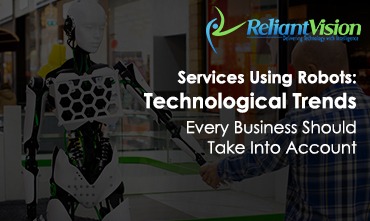Robots as a Service (RaaS) appears to expand quickly based on all indications. By 2026, 1.3 million RaaS installations are expected to bring in $34 billion in income, according to ABI Research. Let’s examine what robots as a service involves, the factors contributing to its growth, some businesses that provide RaaS solutions, and the jobs it may assist.
Robots-as-a-Service (RaaS): What is it?
The terms “software as a service” (SaaS) and “big data as a service” (BDaaS), often known as the pay-as-you-go or subscription-based service model, are now widely understood. Similarly to this setup, customers who sign up for robots as a service will gain access to cloud-based subscription services and lease robotic devices to receive Robotic Process Automation benefits rather than buying the equipment outright. RaaS eliminates the hassles of ownership, such as paying off an expensive piece of equipment and resolving unexpected maintenance needs.
What has led to the growing popularity of RaaS?
RaaS is attracting interest in businesses because it is more flexible, scalable, and affordable than traditional robotics initiatives. These features make robotics accessible to small and medium-sized organizations without the typically prohibitive initial investment.
Robots typically take the place of humans in lower-paying occupations at businesses. Nevertheless, because they are so expensive, it may be years before business enterprises see a return on their investment in robots. Many smaller business enterprises have refrained from investing in robots because of this reality. RaaS is very appealing today in part because of this. RaaS also enables businesses to easily and quickly scale up and down in response to shifting market conditions and customer demands. It offers less initial startup money and more predictable costs.
Hardware costs have decreased as a result of globalisation. Also, it is simple to sign up for and locate robust and affordable cloud computing solutions that enable the provision of robots as a variable-cost service through subscription plans. Due to the fact that many businesses already use software as a service model, business enterprises are also already familiar with the business model. RaaS is gaining traction across a wide range of businesses, from fulfillment centers and warehouses to security and healthcare. RaaS lowers the barrier to entry for other industries as they become aware of the applications for robotics and want to test out and experiment with robotic solutions.
RaaS for a wide range of uses
Some experts claim that using robots to patrol buildings is a 65 percent less expensive option than using human security guards. Robotics data collection is sent back into artificial intelligence algorithms that can find data to enhance security operations.
RAAS can assist online businesses that must handle seasonal spikes in warehouse operations, among other things. In these situations, RaaS is particularly attractive since it enables businesses to scale up fast to fulfill a high demand without spending money on equipment that will not be used, at slower times.
InVia Robotics’ area of specialization is warehouse picker robots. The company provides a goods-to-person fulfillment service using a subscription-based business model. According to InVia, order fulfillment can increase by 500%.
The industrial robotics company Kuka isn’t content renting out robots; they’re also starting a program called SmartFactory as a Service that will let consumers rent out an automated plant, entirely managed by robots.
Challenges to Face
There are still challenges to be faced as many technology companies transition from selling products to selling services like RaaS, such as how much hardware customization is required to make the robots effective for different enterprises with different demands. So, even if a platform might be universal across numerous entities, robotics adjustments will be needed, which result in longer implementation windows and higher implementation costs. RaaS will be the answer that, many enterprises want, regardless of growing pains.



























